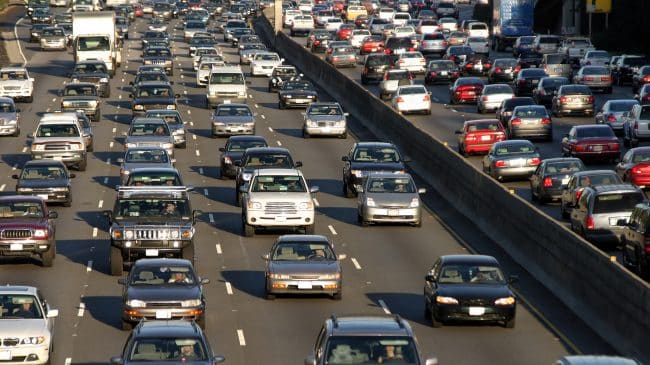Transportation analytics firm INRIX recently released its annual report on traffic congestion, which found, “Los Angeles topped the list of the world’s most gridlocked cities for the sixth straight year, with drivers spending 102 hours in congestion in 2017 during peak time periods, followed by Moscow and New York (tied at 91 hours), Sao Paulo (86 hours) and San Francisco (79 hours).”
The report concluded that the time and fuel wasted sitting in traffic cost the typical driver in Los Angeles over $2,800 last year. And as a result of the wasted time and resources, traffic congestion cost the city of Los Angeles’ economy over $19 billion in 2017.
Even drivers in cities like Dana Point and Oceanside spent over 20 hours stuck in traffic during peak travel times. Our political leaders spend a lot of time on policy topics, but few issues impact Southern California’s economic health more than traffic congestion.
One of the most promising methods of improving mobility and reducing these traffic jams is to use pricing and tolling. In recent years, Los Angeles Metro implemented toll lanes on I-110 and I-10 to alleviate some of the traffic congestion, providing commuters with congestion-free options and improving transit service. Solo drivers using I-110 or I-10 toll lanes pay a per-mile fee that varies depending on traffic congestion. Cars with three or more passengers are not charged, as these toll lanes allow free passage to carpools. The Express Lanes use dynamic tolling, meaning as traffic gets worse the toll rate goes up until it is capped at $1.90 per mile.
Toll lanes can often be built at little or no cost to taxpayers, which is key as California struggles to fund major infrastructure projects. Many states, including California, have opted to build them through public-private partnerships. In Orange County, toll roads — roads that offer toll lanes only — like California State Route 73 have long helped alleviate traffic. SR-73 was built entirely with private investment, funded through the sale of bonds. The revenue made from the tolls in SR-73 goes to paying off the construction debt and maintaining the road.
Adding toll lanes in key corridors is important, but ultimately Southern California needs a network of priced lanes. As Reason Foundation’s 2015 Southern California transportation plan detailed, implementing variably-priced tolls on all of the region’s highways would enable individuals and businesses to escape traffic and speed up travel times. In 2017, the Los Angeles County Metropolitan Transportation Authority agreed, noting its “analysis led to the recommendation to develop a 621 lane-mile Express Lane network.”
Tolling technology has become increasingly sophisticated and can be used in a large-scale network. Researchers examining driver psychology, prior toll rates, rush-hour commuting habits and other data are able to find the right pricing balance that sets the tolls high enough to ensure the lanes are not congested but low enough so that all drivers can use the lanes.
Similarly, toll collections, once an impediment to smooth traffic, have been largely improved through sophisticated technology. The existing Southern California toll roads all accept FasTrak transponders. Drivers with a FasTrak transponder receive a discount on some of these roads and bridges, including SR-73. The days of costly, time-consuming manual toll collections and booths are behind us.
One of the best things Southern California can do to improve its economy is to reduce the amount of time — and money — wasted in traffic jams. As successful toll roads in Orange County and Los Angeles show, variably-priced toll lanes and roads, which can be constructed without taxpayer funding, are one of the best ways to get the region’s highways and economy moving.
This column originally ran in The Orange County Register.

